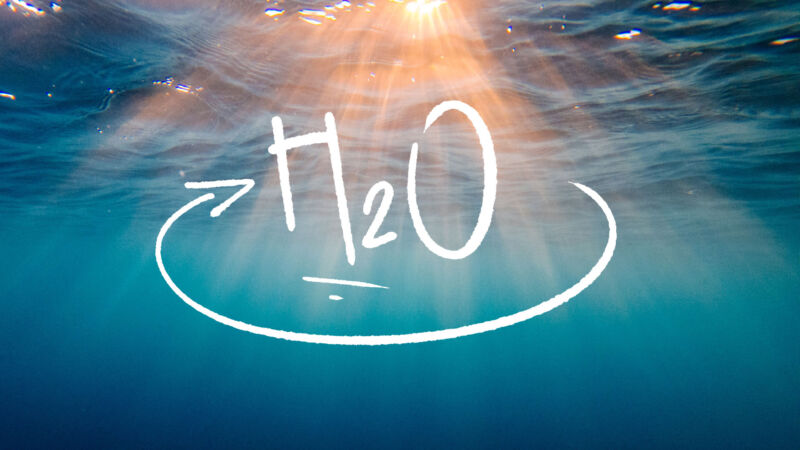A new molecule could be the key to getting hydrogen whenever it's needed.
DOUG JOHNSON - 2/4/2022,

Enlarge
Aurich Lawson | Getty Images
There’s a disconnect between when people want to use electricity and when solar tends to produce it. Most often, people use power during the evening or the early morning, when the Sun isn’t yet up.
“There is a mismatch between solar irradiation arriving on Earth and the time when you actually need the energy,” Carsten Streb, a researcher at Elm University, told Ars. “Typically, the energy demand—at least in Germany—is highest in the morning and the evening. Everyone switches on their appliances. But obviously, irradiation is strongest at mid-day.”
One option to handle this mismatch is to use solar power to produce hydrogen, which can then be used at a later time. But keeping the hydrogen around for later use can be a challenge. As Streb told Ars, “One of the big problems we’re seeing with hydrogen is the storage.”
In theory, you could de-link the production of hydrogen with the light from the Sun using solar panels to charge a battery that powers an electrolyzer when the hydrogen is needed, but that has its own issues. “With every energy conversion step, you have losses. That process, while feasible, is not efficient,” he said.
Soak up the Sun
However, Streb and a multidisciplinary team of researchers have produced a novel molecule that could be used to allow hydrogen to be made from solar energy on demand—even when it's dark. They developed a photosensitizer–polyoxometalate dyad that absorbs light and stores charge and then can use that charge to produce hydrogen when triggered to do so.
In short, you shine a light on the solution containing the molecule and wait for it to charge—Streb noted that the solution goes from clear to a dark, inky blue in the presence of light. When you want to trigger the hydrogen release, you just add an acid, like the sulphuric acid Streb and his team used.
The hydrogen that's released can then be used for power. Streb said that previous work in this area has produced compounds that can hold electrons for short periods of time, sometimes just fractions of a second. The one he and his team made, however, can store them for hours or even days—the half-life is around 40 hours.
In theory, this molecule could be used almost like a liquid fuel to produce hydrogen at any time of day for a hydrogen-powered vehicle, he said. He did note, however, that the research does not cover how to recycle the molecule. The molecule can be charged and discharged multiple times, but there is some level of degradation that occurs with it. Streb noted that this is a problem that other, similar research is experiencing as well.
“In all fairness, it’s not unexpected. These are light-sensitive compounds that we are using. Typically, when you shine a lot of light on them, they tend to break apart,” he said. “This is something we are working on right now.”
It's still too early to say how useful this molecule could be, however. Beyond questions about recyclability, ruthenium—an element used in the molecule—is quite expensive. All the same, the research is an interesting way around some of the technical problems that hydrogen fuel faces.
Nature Chemistry, 2022. DOI: 1038/s41557-021-00850-8 (About DOIs)
No comments:
Post a Comment